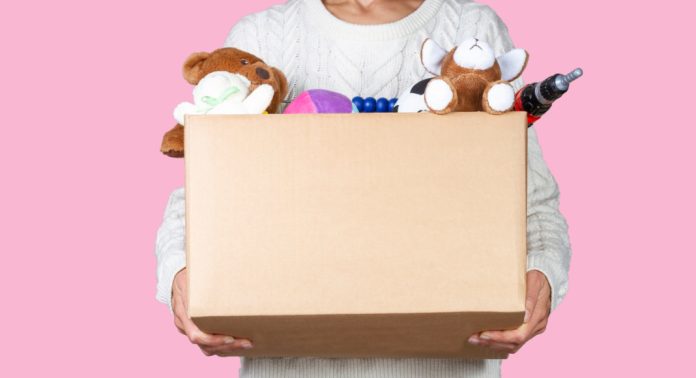This is the third segment in a three part series tackling how to parent in more eco-friendly ways. The first post was on cloth diapering, the second on food waste, and this one will discuss toys and clothing.
In our consumerist society, adorable children’s clothing is ubiquitous, and buying it for a parent-to-be or a child is a social norm. Because of this, many parents are inundated with new outfits that their children likely won’t wear for more than a few months. Because they are so cheap, people don’t feel the need to shop second hand, so the market is flooded. According to an article on Earth.org by Martina Igini, the average American throws away 81.5 pounds of clothing per year. That equates to 11.3 million tons of textile waste going into landfills in the United States annually (August 2, 2022).
This is true with toys as well. Often cheap, they are bought with enthusiasm by relatives, friends, and sometimes parents themselves. Within a short while, they clutter up the house, and often end up abandoned in the garage or shed. Very few have staying power.
How do you avoid falling into the trap of new clothes and toys, which are bad for the environment?
- Buy used. Embrace hand-me-downs from others. Go to garage sales, thrift stores, and search Facebook marketplace. Clothes are often grown out of but still have plenty of life. This is a more eco-friendly choice and much better for your wallet, too. Wash clothes prior to wear, and clean toys with a detergent prior to use.
- Normalize buying used. Just because there’s an event (a baby shower, Christmas, Hannukah, a birthday, etc.) doesn’t mean you have to buy new. This is a social norm that we need to eradicate. A used gift is just as thoughtful (or more so, when you consider thinking about the earth!) as a new gift. Tell relatives you’d only like used gifts for kiddos this year. New is not better.
- Don’t buy it if you don’t need it. Deals advertise two packs for only 1.5x the cost of a single item. Tempted? Why? Now you have a double impact on the earth, and you’re spending more money. Again, don’t fall for the tactics companies use to trick you into spending more. You’re not saving money this way. Similarly, if you have enough of something, let your relatives know. Both my mother and in-laws know that I will let them know if Claire needs something, so they can get it as a gift if they’d like. Perhaps instead of a THING, relatives who want to gift something can buy an experience, such as admission to the Aquaplex or enrollment in a Tynkertopia.
- Invest in quality items. When you have a choice, choose wooden toys over plastic. Not only are they better for the environment, they often are better for kids’ health. Plastic toys are usually made in China, where the regulations aren’t as strict.
- Swap books, movies, etc. with other parents for a little bit. This is a great way to introduce more variety without having to buy it.
Raising children can be hard on our wallets and on the environment. Our consumeristic, capitalistic society tends to make it even harder. Hopefully, though, with these three blog posts (on cloth diapering, food, and now toys and clothing), you will feel more confident making eco-friendly decisions—and you’ll notice that they’re often the cheaper options, too.
I’m always learning, too! Please put your own ideas in the responses so I can see how others parent in a way that is less detrimental to our earth.









